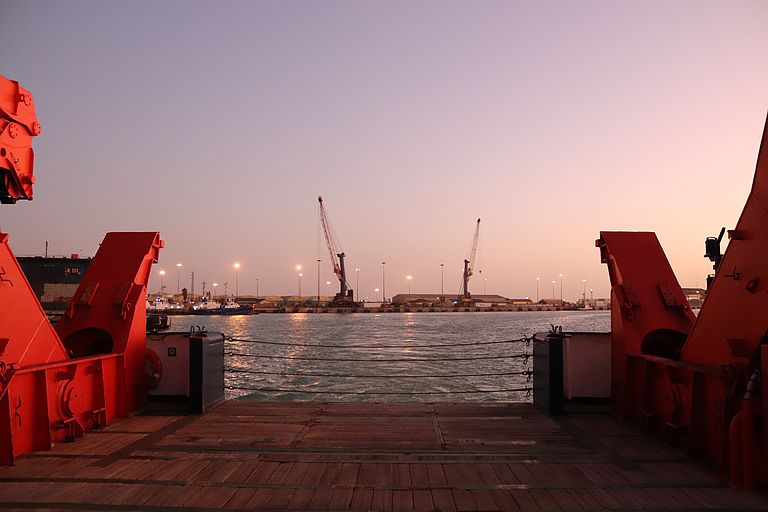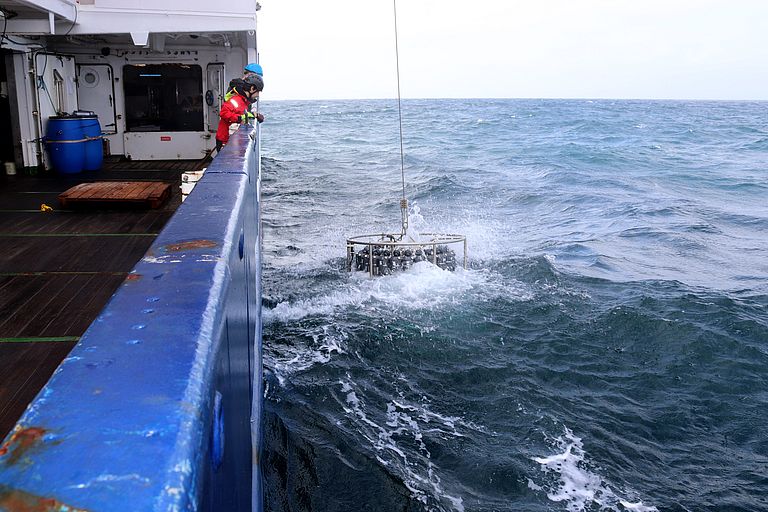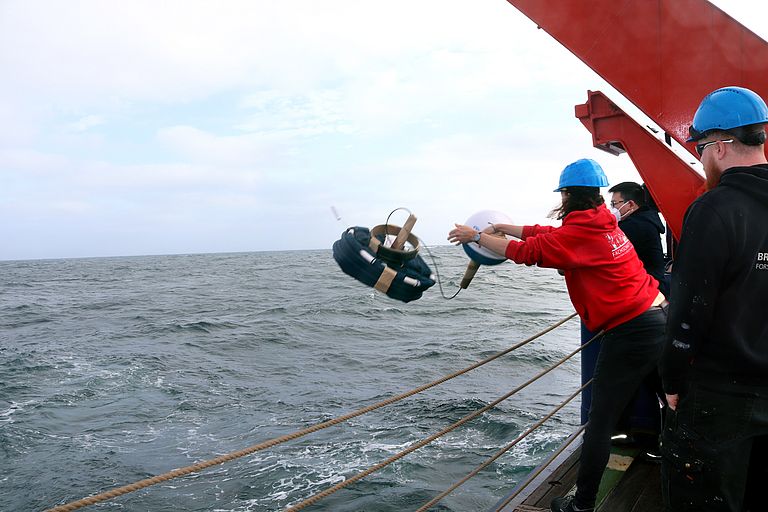Following the traces of phytoplankton
METEOR expedition M187 off Namibia aims to improve our understanding of future changes in marine food webs and carbon uptake by the ocean
Phytoplankton, microscopic marine plants, form the foundations of food webs and support the ocean’s uptake of carbon dioxide (CO2) from the atmosphere. But to thrive, they do not only need sunlight and CO2, but also a variety of nutrients. To better understand how these tiny life-giving organisms are affected by climate change and other human-induced stressors, scientists aim to learn more about impacts of nutrient abundance and limitations on phytoplankton. From 25 January to 4 March 2023, an expedition with German research vessel METEOR led by Dr. Thomas Browning, marine biologist at GEOMAR Helmholtz Centre for Ocean Research Kiel, follows the trace of planktonic material off the coast of West Africa to study these dependencies.
“We will measure nutrient concentrations as well as currents, temperature and salinity, collect samples for abundance and types of microbes in seawater and conduct experiments throughout our cruise along the coast of Namibia”, explains Dr. Browning. “In this region, natural, wind-driven upwelling of deep water leads to the formation of so-called filaments, thread-like structures that move offshore towards the central South Atlantic.” Such filaments can be found up to 1000 kilometres offshore at depths to 100 metres, stretching out tens of kilometres. These filaments can be identified by their low temperatures in satellite images – a characteristic that researchers on board METEOR will take advantage of.
The upwelled water contains elevated concentrations of nutrients including nitrate, phosphate, silicate and iron. In the sunlit ocean surface, phytoplankton use these elements for their growth. Over time, as the filaments are transported offshore, the nutrients are drawn down. “We assume that these dynamics change the phytoplankton community towards species that are able survive with fewer nutrients”, says Dr. Browning. “One important resulting question of our research is therefore: Does the export of carbon towards the deeper ocean change as the filament moves offshore and ages? What mechanisms regulate these changes?”
The findings from the expedition will also benefit Dr. Browning’s new project “Ocean Glow” that is funded with one of the prestigious Starting Grants from the European Research Council (ERC). “For ‘Ocean Glow’, we will use measurements at sea that replicate what satellites in space observe. This includes observations of natural fluorescent light emitted by phytoplankton, which we hypothesize can be used to learn which nutrients regulate marine primary productivity and provide a way to improve global monitoring and modelling of climate-related changes”, the marine biologist summarises. “The combination of planned shipboard observations of natural phytoplankton fluorescence with detailed information about the amounts and types of phytoplankton and their nutrient limitation status is critical for being able to properly understand what the satellite images are telling us.”
The participants of the METEOR expedition, the researchers use various methods to locate and track the filaments. Satellite images of sea surface temperature will be combined with measurements of water temperature and currents. Drifter buoys will be deployed to follow the same patch of seawater over multiple days and observe how the filament chemistry and biology changes. A towed device, the “Scanfish”, monitors temperature, salinity and phytoplankton fluorescence on a zigzag dive pattern around the core of a filament allowing the researchers to map its depth and width. Samples of the filaments will be collected to evaluate chemical and biological changes. In addition, on-board phytoplankton incubation experiments are planned to study nutrient uptake and growth under different conditions.
“An improved knowledge about the amounts, forms and sources of nutrients, microbial diversity, and changes in nutrient limitation in filaments will help us understand how this system functions and how it might change in the future ocean”, states Dr. Browning. “Because of the key role of these tiny organisms, this is important to assess how the marine food web might develop in the future. For example, this information can be included in models used to predict the impacts of climate change.“
METEOR expedition M187
25 January – 4 March 2023
Walvis Bay (Namibia) – Walvis Bay (Namibia)
Project funding:
Resolving SE Atlantic nutrient limitation - interaction of physical, chemical, and biological factors’ (ReSEAt) is funded by the German Research Foundation (Deutsche Forschungsgemeinschaft, DFG)
Ocean Glow is funded by the European Research Council (ERC)





